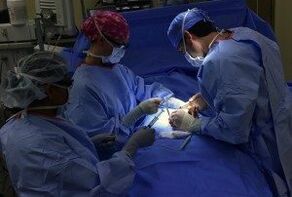
Varicose veins of the lower extremities is a chronic disease characterized by a violation of the mechanism of blood flow in the veins. For this reason, the venous walls are under constant pressure, gradually thinning, and nodular dilatations form in the veins.
Varicose veins develop as a result of blood stasis in the vessels of the lower extremities. It manifests itself by swelling of the peripheral vessels of the legs and protrusion under the skin. The veins look crooked and take on a blue color. There is severe pain in the legs.
Varicose veins progress without treatment and are complicated by thrombophlebitis and trophic ulcers. To prevent the development of the disease, treatment of varicose veins should begin at the first symptoms.
First of all, doctors use conservative methods to treat varicose veins in the legs. If it does not work, they resort to surgery.
Physiotherapy treatment
Physiotherapy methods play an important role in the treatment of varicose veins in the legs. The main ones are:
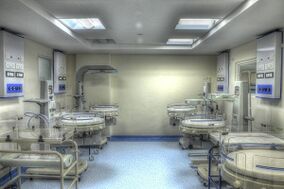
- Electrophoresis;
- Lymphatic drainage;
- Hyperbaric oxygenation;
- Galvanized;
- Magnetotherapy;
- Darsonvalization;
- Exposure to ultraviolet rays;
- UHF and others.
The most popular procedure is darsonvalization. It is carried out with a special device that creates weak electrical discharges. Move from bottom to top for 15 minutes for each limb. The course of treatment for varicose veins is about 20 sessions (depending on the stage of the disease). As a result, vascular tone is normalized, lymph flow and microcirculation in the legs are improved.
Pulse magnetotherapy is performed using a generator of magnetic fields that generates vortex electric currents in the tissues of the lower extremities, which have a therapeutic effect. As a result of this effect, the muscle fibers of the vascular walls in the legs are stimulated and toned. It improves blood circulation in the extremities, reduces swelling and reduces pain. The session lasts from 10 to 20 minutes, depending on the degree of development of varicose veins.
Pneumatic compression also helps to restore the tone of blood vessels and blood vessels through a kind of massage. A device similar to a shoe is placed on the patient's foot. Pressure is supplied by the gas supply. However, this method should be discarded for patients with varicose veins prone to thrombosis.
Balneotherapy is an effective method of treating varicose veins in the legs, which consists of taking a bath with mineral water. The baths themselves are assigned locally or in general. Hydrotherapy is a controversial local bath. These methods are especially effective in the early stages of the disease. At this stage, the manifestations of varicose veins are very effective in treating these methods.
Oxygenation
In addition to local physiotherapy procedures, others are performed that affect the whole body as a whole. For example, a foam bath improves oxygen circulation and relieves the symptoms of varicose veins in the legs. Hyperbaric oxygenation is beneficial. During the session, the patient breathes pure oxygen at a pressure of more than one and a half atmospheres.
Ozone therapy is related to this method. Inhalation of ozone activates many processes in the patient's body: microcirculation improves, metabolism normalizes and recovery is accelerated. In therapeutic doses, ozone also prevents the formation of blood clots and makes the blood thinner. The course of ozone treatment of varicose veins is 5-10 procedures with an interval of 2 days between them.
Physiotherapy is especially effective in the early and middle stages of the disease. Physiotherapeutic procedures should be prescribed by a phlebologist.
Drug treatment
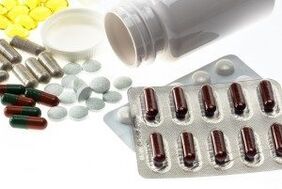
The drug is of secondary importance for how to defeat varicose veins in the legs. It is the key to successful treatment and high efficiency of the main method. Medications are prescribed during physiotherapy and other conservative treatments and after surgery.
There are many medications for the treatment of varicose veins. They can be used separately or together. A phlebologist should prescribe one that is appropriate. All drugs can be divided into several groups:
- Phlebotonics;
- Anticoagulants;
- Decongestants;
- Thought differences;
- Antioxidants
- Fibrinolytics.
Phlebotonics allows to increase the tone of blood vessels and vascular walls and is therefore effective in the treatment of varicose veins in the legs. The walls become stronger and denser. The effect of treatment with other methods is stable. Improves blood circulation in the legs, improves lymph flow. They are prescribed to relieve inflammation in the varicose veins to prepare for surgery and then rehabilitate.
Anticoagulants are drugs that work to reduce the blood's ability to coagulate. This prevents the formation of blood clots, which are important for varicose veins of the foot. They can be taken in pill or injection form. It is dangerous to take them without consulting a doctor, because there are side effects - it is difficult to stop.
Decongestants can be taken orally in pill form or externally in the form of gels and ointments. Diuretics are mainly used in tablet form. Such drugs significantly reduce the pain in the legs with varicose veins, put additional pressure on the walls of the veins. Their use improves blood circulation.
Disaggregants - drugs that also affect blood clotting are not anticoagulants. They stop the coagulation process only at the earliest stages and therefore do not belong to anticoagulants. They do not significantly affect the overall coagulation performance. When used as an adjunct treatment for varicose veins, they have the same effect as anticoagulants.
Antioxidants work by detoxification. As a result of the restoration of chemical bonds in the cells, the tone of blood vessels and vessel walls increases. As a result, the treatment of varicose veins of the foot is faster.
Fibrinolytics prevent blood clotting. This is due to the destruction of fibrin, which is part of the blood clot. The use of a drug from this group allows blood plasminogen (an inactive protein) to take the form of plasmin, which causes the destruction of blood clots. However, taking this drug does not prevent further thrombosis with varicose veins.
The pharmaceutical company has developed a number of drugs that combine the characteristics of several groups described. Such drugs should be prescribed by a doctor and taken under his strict supervision. This is due to the fact that there are enough side effects.
The use of drugs against varicose veins in the legs can not be the only measure. It is prescribed in combination with other treatments.
Laser therapy
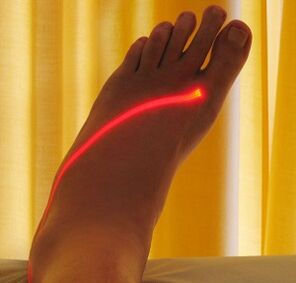
This is an effective way to treat varicose veins of the legs. In this disease, the principle of operation of the laser is the effect of hemoglobin. Hemoglobin absorbs laser light and generates heat in the blood. As a result, the damaged vessel is "sealed". The laser also indirectly affects the tone of the arteries and the walls of the arteries, as it causes the walls to spasm. The advantage of such an effect is accuracy. It affects only certain tissues without affecting the surrounding in any way.
After exposure to the laser, the movement of blood in the treated area will stop. The blood supply to this part of the extremity will be provided by deeper vessels. In the "non-functioning" part of the vessel, connective tissue is formed, which dissolves over time.
The advantage of this method of getting rid of varicose veins is minimal trauma. Patients do not feel any discomfort or pain after the intervention. In addition, there are other advantages:
- The method does not require skin incisions, unlike surgery. Thus, no scars remain after that. There is no bruising after the procedure;
- The operation is short and is performed under local anesthesia. With this in mind, it is as safe for health as possible, unlike surgery performed under general anesthesia;
- In material terms, laser treatment of varicose veins is similar to surgery. Although it may seem more expensive, it should be borne in mind that the patient no longer needs to go through a rehabilitation period and stay on sick leave for a long time or spend money on recovery.
Many diseases can be treated with laser. It has become a good alternative to many types of procedures. Minimal trauma, painlessness and effectiveness - all this in many cases favors laser treatment.
Sclerotherapy
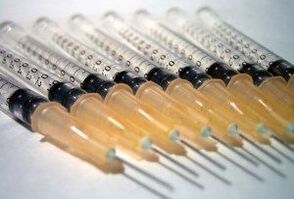
Sclerotherapy is a popular method of treating varicose veins in the legs, sometimes referred to as physiotherapy. Basically, special drugs are injected into the veins. The method is non-traumatic and effective, so it is popular. The effectiveness of this method can sometimes be compared to laser and even surgery. After such a procedure, the walls of the vessel are glued and strengthened, which makes it possible to defeat the varicose veins of the legs. And the drug is absorbed in the body.
The main advantage of the method of getting rid of the disease is the absence of wounds and bruises after the procedure. It is also important that it is not too painful and can be done under local anesthesia. After the procedure, the integrity of the circulatory system is not compromised, because the vessels are not removed. Such an intervention may be an ideal choice in the treatment of relapses of the disease when it is dangerous to use both surgical methods - thrombophlebitis, periphlebitis and fragility and twisting of blood vessels.
The method has a number of contraindications. First of all, this is the period of pregnancy and lactation. Serious diseases of the cardiovascular system, diabetes, chronic liver and kidney disease, allergies - all this will be a contraindication to the use of sclerotherapy, it is better to think about how to treat varicose veins of the legs differently.
If a doctor prescribes sclerotherapy, he should be informed of possible contraindications. If a patient has chronic diseases of any nature, then the possibility of using sclerotherapy is questionable.
Surgery

Surgery is a traumatic and painful way to effectively treat severe varicose veins of the legs. But only its efficiency reaches 100%. In addition, it sometimes takes less time than others. The disadvantages are large wounds and scars with a long rehabilitation period. There are several types of surgery:
- Peeling involves removing a portion of a vein with a thin probe. It is injected at the beginning of the vein and withdrawn at the end. In this case, the area fixed on the probe seems to turn from the inside and it is easier to remove it;
- Phlebectomy is a traditional surgical procedure that uses a scalpel to cut tissue to treat varicose veins. Both are performed when minimally invasive intervention is not possible, for example, when significant areas are affected or when there is severe inflammation, and for other indications;
- Microflebectomy is considered a minimally invasive operation. Helps effectively treat varicose veinsThe type of execution is similar to the previous method, only the incisions in the skin are made very small. Thus, it is less traumatic. This can be done if the lesion is not so severe and it is not necessary to remove a large part of the vessel.
This method has many indications and contraindications. Thus, pregnant women and those who have recently given birth cannot be interfered with. You need to wait at least a month and a half after giving birth. You should not use this method in the early stages of varicose veins.
Surgery is not a guarantee that varicose veins in the leg will not recur. You need to take care of your health.
Many methods of treating varicose veins in the legs allow the doctor to choose the best for each situation. However, the more the disease begins, the more radical a method will have to be chosen. Therefore, if you notice the first signs of varicose veins in your legs, you should not delay seeing a doctor.




































